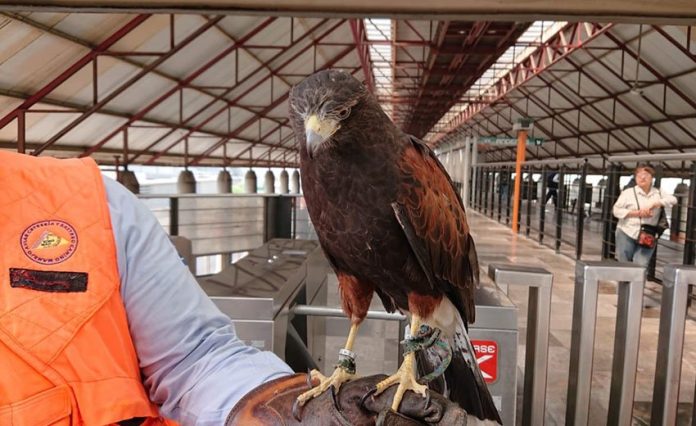A longstanding problem in Mexico City’s above-ground Metro stations is being addressed with birds of prey.
City transit authorities are using Harris’s hawks in “biological control measures” to chase away pigeons that have for years proliferated in the above-ground stations of the Metro system.
Authorities said the high acid content of the pigeons’ excrement frequently blocks drainage systems and can rapidly corrode train tracks.
Officials said the use of hawks began last month in some stations where the potential threat of service interruption due to large flocks of pigeons is greatest. The hawks will initially be used throughout regular service hours and into the night to prevent the pigeons from returning after hours.
Transit authorities said Mexico City is not the only major urban hub to implement the technique.
In a second phase of the measure, once the hawks have successfully cleared the stations of loitering pigeons, transit employees will hang a dummy hawk as a scarecrow to further deter any especially stubborn birds that remain.
“We carry out these actions Monday to Friday at different times of the day. It is environmentally friendly since it does not make use of gases or violent means of removing the pigeons. As such, it also avoids any possible risks to public health due to the accumulation of the pigeons’ excrement on the stations’ roofs,” the city said.
